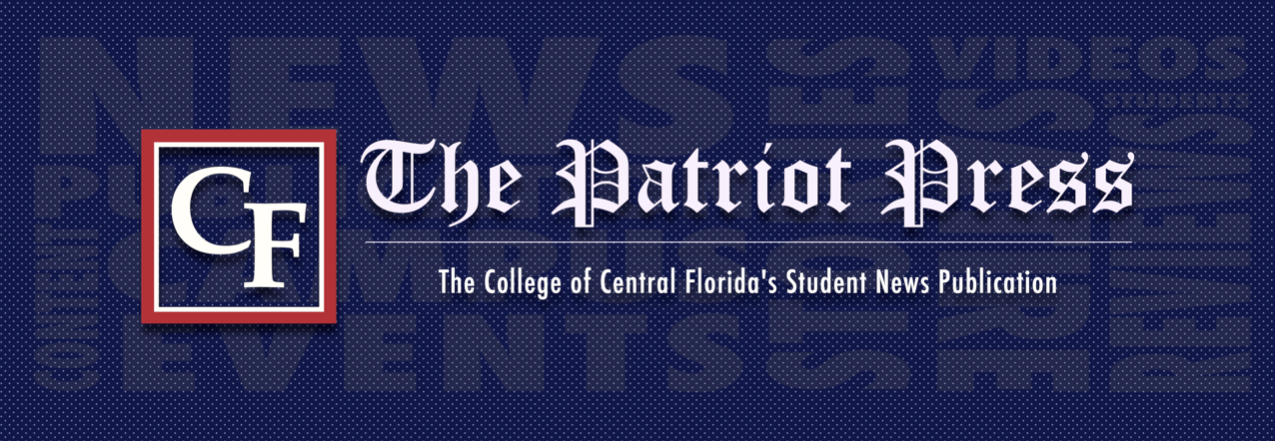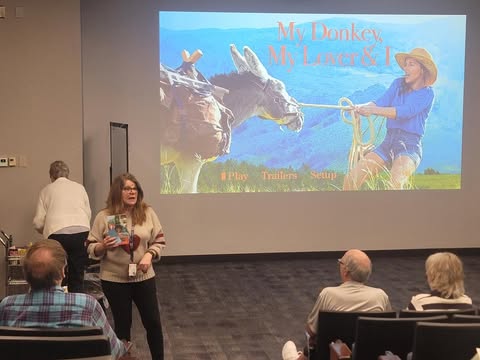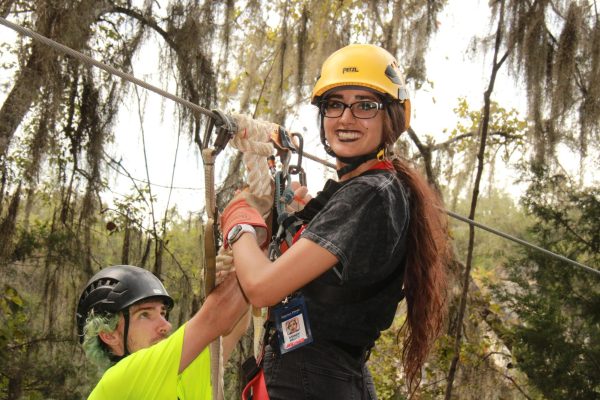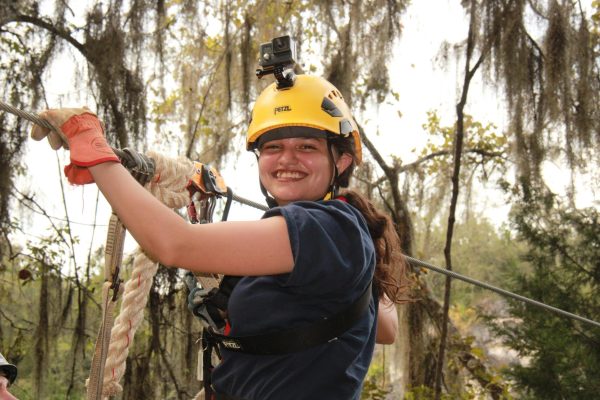The Ira Holmes International Film Series recently showcased the French romantic comedy, “My Donkey, My Lover & I,” as the latest film to bring international cinema to local audiences. Shown on March 11, the film offered a charming mix of humor, self-discovery and breathtaking scenery, keeping with the series’ tradition of showcasing diverse and thought-provoking films.
Directed by Caroline Vignal, the film follows Antoinette, portrayed by Laure Calamy, a Parisian schoolteacher who embarks on a whimsical journey through the Cévennes mountains. Her quest to surprise her married lover, Vladimir, leads her to an unexpected companion – a stubborn donkey named Patrick. This unlikely duo navigates the picturesque trails (and Antoinette’s emotions), encountering both comedic mishaps and moments of self-discovery.
One of the film’s greatest strengths is its ability to balance humor and emotional depth. Antoinette is an often chaotic, somewhat foolish protagonist, yet her flaws make her incredibly endearing. It’s easy to laugh at her misadventures, from struggling to control Patrick to awkwardly interacting with fellow hikers, but beneath the comedy lies a deeper story about self-worth and personal growth. Watching her transformation from someone chasing after an unavailable man to someone rediscovering her own independence felt genuinely rewarding.
The cinematography was another standout element. The Cévennes mountains weren’t just a setting: they became a character. The film beautifully captured the vast landscapes, making Antoinette’s journey feel both physically and emotionally expansive. There was something almost meditative about watching her traverse the winding paths as the scenery itself was guiding her toward clarity.
One of the most defining moments that exemplifies a moment of clarity and foreshadows her future journey is when she gets lost. She receives a text from her lover and becomes engrossed with it, trying to find signal to respond and continue exchanging texts. However, in her panic to quickly find signal, she became lost, unable to find her way back to her original path. Finally, she resigned to sleeping on the floor and accepting her situation, only to wake up to a beautiful scene, surrounded by various forest animals. This scene uses nature to foreshadow her eventually conflict of deciding whether or not it’s really time to give up on Vladimir when his wife has an in-depth talk with her about his other affairs and some braying from Patrick.
Similarly to when she gets lost, it’s a winding path of self-deception and anger before her eventually acceptance. However, after she does accept the situation, and complete the trail, she finally has her moment of walking off into the distance with a new possible love interest and a Patrick with less braying as she discusses a possible future with Patrick in a place she came to appreciate.
Patrick, the donkey, was undeniably one of the film’s most memorable aspects. At first, he seemed like just an obstacle – an unwilling travel partner who only added to Antoinette’s frustration. But over time, their relationship became unexpectedly touching. His quiet presence mirrored her emotions, and by the end of the film, their bond felt as significant as any human relationship that are observed in the romantic comedy genre.
A first look at their moment of bonding happens when Antoinette realizes talking to Patrick encourages him to continue walking. She tells him about her life and the situation with Vladimir. This comes full circle when Antoinette and Vladimir are reunited and Patrick brays in a mocking way at him and his wife. Showing he understood the moment and held some sort of disdain toward Vladimir.
Following the screening, attendees participated in a discussion about the film’s themes, cinematography and character dynamics. Some viewers commented on how refreshingly lighthearted the story was compared to other films in the genre, others noted how the film’s humor helped make its deeper messages more accessible. Others even resonated with Antoinette’s personal growth and the way the film presented self-discovery.
Regulars at the film series found “My Donkey, My Lover & I” to be a standout in its blend of charm and emotion. They believed the film blended its elements well and felt different from other films in the way it used nature as a storytelling device. One student highlighted the film’s accessibility, explaining that while some international films can feel distant in theme or style, this one had a universally relatable story.
The inclusion of “My Donkey, My Lover & I” in the Ira Holmes Film Series underscored CF’s commitment to presenting films that are culturally, historically and artistically significant. This series continues to offer a valuable opportunity for students and the community to engage with global cinema in a meaningful way.
Ultimately, “My Donkey, My Lover & I” was an unexpectedly touching experience. What started as a simple comedy about a woman chasing the wrong man evolved into a thoughtful exploration of self-worth, adventure and the unexpected connections we make along the way. Whether it was through Antoinette’s journey, the scenery or the silent wisdom of Patrick, the film left one lasting impression – one that lingered well beyond closing credits.
The next event for the Ira Holmes International Film Series will take place on March 25, which will be screening “Following the Ninth: In the Footsteps of Beethoven’s Final Symphony,” a documentary directed by Kerry Candaele about Beethoven and the affects his final Symphony had on the world. The first screening will be taking place at the Appleton Museum at 2 p.m. and the second showing will take place The Marion Theatre at 7 p.m. For more information about the film series, Ira Holmes and their upcoming events, visit their website.





